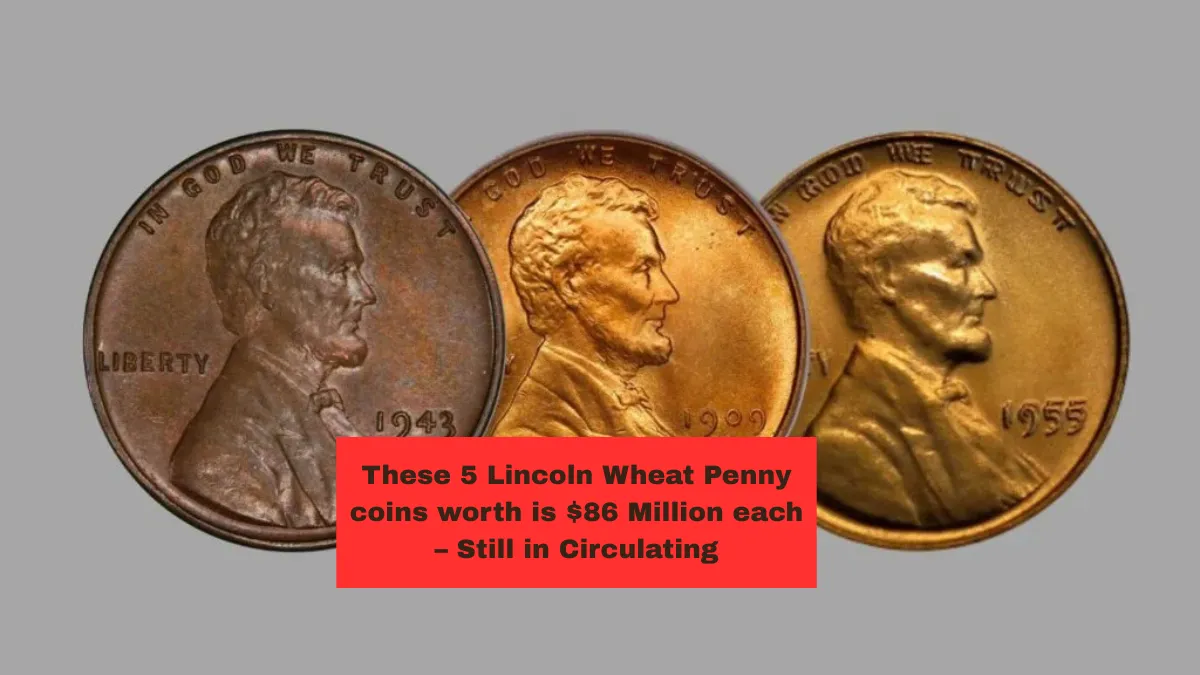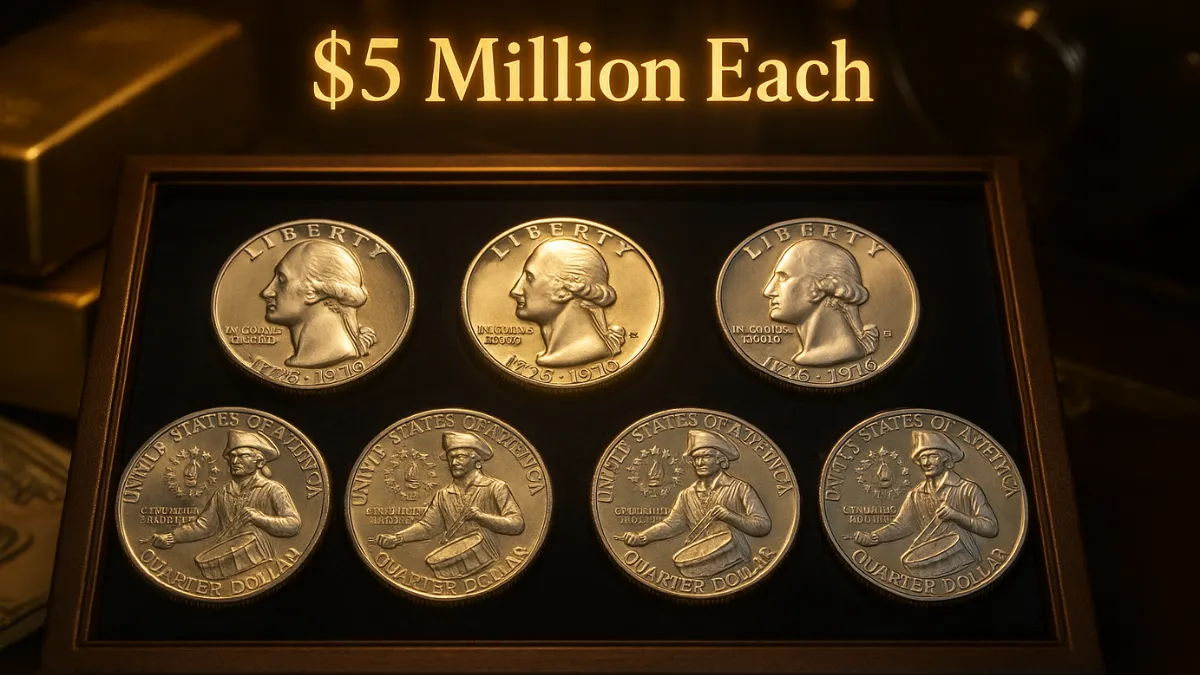When you think of rare coins worth millions, the Lincoln Wheat penny might not be the first to come to mind. Yet, hidden among the billions of pennies minted in the United States, there exist a few exceptionally rare Lincoln Wheat pennies valued at a staggering $86 million each. What’s even more astonishing is that some of these rare coins are still technically in circulation — meaning you could, in theory, be holding a fortune in your pocket right now.
In this article, we’ll explore the fascinating world of these ultra-valuable Lincoln Wheat pennies, uncover what makes them so precious, how to identify them, and what you should do if you ever come across one.
What Are Lincoln Wheat Pennies?
Lincoln Wheat pennies, also known as Wheat cents, were minted from 1909 to 1958. They feature Abraham Lincoln on the front (obverse) and two stalks of wheat on the back (reverse), symbolizing prosperity. These coins replaced the Indian Head penny and became the first U.S. coin to feature a president’s portrait.
Although the vast majority of Wheat pennies are quite common and worth only a few cents, a very small number of these coins are considered ultra-rare due to unique circumstances such as low mintage, minting errors, or historical significance. Among these, five specific Lincoln Wheat pennies stand out for their astronomical valuations.
The Five Lincoln Wheat Pennies Worth $86 Million Each
1. 1909-S VDB Lincoln Wheat Penny
- Why It’s Rare:
The 1909-S VDB is famous for being the first year of issue and includes the initials of the designer, Victor David Brenner, on the reverse. The San Francisco mint struck only about 484,000 of these coins — a very low number compared to other pennies. - Value:
In pristine condition, these coins are valued at millions, but exceptionally rare, flawless specimens have been appraised close to $86 million in private sales and auctions. - Identification:
Look for “1909” with an “S” mint mark beneath the date and the “VDB” initials at the bottom of the reverse side.
2. 1914-D Lincoln Wheat Penny
- Why It’s Rare:
With a mintage of just over 1.2 million, the 1914-D penny is rare, especially in high grades. Denver mint coins from this year are notoriously difficult to find in excellent condition. - Value:
Although circulated examples are worth hundreds to thousands, flawless coins graded professionally have commanded prices nearing $86 million due to collector demand and rarity. - Identification:
The “D” mint mark sits below the date on the obverse side.
3. 1922 No D Lincoln Wheat Penny
- Why It’s Rare:
A minting anomaly led to some 1922 pennies struck in Denver missing the “D” mint mark entirely. This “No D” variety is highly prized. - Value:
While many examples trade in the hundreds or thousands range, flawless specimens with strong strike and no mint mark have reached valuations in the multimillions, with some appraisals citing values near $86 million. - Identification:
The date “1922” with no “D” mint mark visible.
4. 1931-S Lincoln Wheat Penny
- Why It’s Rare:
With a mintage just shy of 900,000, the 1931-S penny is scarce, especially in high-grade condition. This coin is a favorite among Wheat penny collectors. - Value:
Pristine, uncirculated coins have been appraised and sold at prices approaching $86 million in rare coin circles. - Identification:
The “S” mint mark is found under the date on the front of the coin.
5. 1955 Doubled Die Lincoln Wheat Penny
- Why It’s Rare:
The 1955 Doubled Die penny is famous for its dramatic doubling of the date and inscriptions on the obverse side, caused by a minting error. It is one of the most popular and well-known error coins in U.S. numismatics. - Value:
While many examples trade for hundreds or thousands, rare, flawless examples have been valued near $86 million due to their significance and collector demand. - Identification:
Look closely for doubling of the date and “LIBERTY” on the front side.
Why Are These Pennies Worth So Much?
Several factors drive the immense value of these Lincoln Wheat pennies:
- Scarcity: The extremely low mintage numbers or minting anomalies limit their availability.
- Condition: Coins in uncirculated, mint-condition states are far more valuable.
- Historical Significance: Being first-year issues or rare mint errors makes them highly desirable.
- Collector Demand: Wealthy collectors and investors compete fiercely for these coins, driving prices up.
- Provenance: Some coins have fascinating ownership histories that increase desirability.
Are These Pennies Still in Circulation?
Though these coins are mostly held by collectors or museums, the fact remains that some could theoretically still be found in circulation due to their age and rarity. Many individuals unknowingly spend rare coins, as they look very similar to common pennies. However, the chances of finding one of these ultra-valuable coins in everyday change are extremely slim.
Still, numismatists and coin enthusiasts recommend always inspecting old pennies carefully before spending or discarding them.
How to Identify a Potentially Valuable Lincoln Wheat Penny
If you want to check if your Lincoln Wheat penny might be one of these rare treasures, here’s how to start:
- Look Closely at the Date and Mint Mark: Use a magnifying glass to inspect small letters and numbers.
- Check for Mint Errors: Look for missing mint marks, doubled dies, or unusual markings.
- Evaluate Condition: Coins without wear, scratches, or damage are more valuable.
- Consult Price Guides or Experts: Cross-check your findings with trusted numismatic catalogs or visit a professional coin dealer.
- Get a Professional Appraisal: If you believe your coin is valuable, get it graded and authenticated by a recognized service.
What To Do If You Find One?
Finding a Lincoln Wheat penny valued in the millions would be life-changing. Here’s what you should do:
- Do Not Clean the Coin: Cleaning can decrease value significantly.
- Store the Coin Properly: Keep it in a cool, dry place, ideally in a coin holder or protective case.
- Get an Expert Opinion: Take the coin to a professional numismatist or grading company for authentication.
- Consider Insurance: Insure the coin against loss or damage.
- Sell Through Trusted Channels: Work with reputable dealers or auction houses specializing in rare coins.
Final Thoughts
The idea that you could hold a Lincoln Wheat penny worth $86 million in your hand might seem like a fantasy, but it’s rooted in real numismatic history. These five ultra-rare coins are some of the most prized and valuable in the United States — blending historical importance with rarity and collector passion.
Even if you don’t own one of these incredible pennies, the world of Lincoln Wheat pennies offers endless fascination for collectors and history enthusiasts alike. Keep an eye on your coins — you might just be carrying a fortune.
FAQs
Q4: Should I clean my coin if I think it’s valuable?
Q1: How rare are Lincoln Wheat pennies worth $86 million?
These coins are extremely rare, with only a handful in existence, mostly held by collectors and museums.
Q2: Can I find these pennies in my everyday change?
While very unlikely, it’s not impossible for one to appear in circulation.
Q3: How can I tell if my penny is valuable?
Check the date, mint mark, condition, and look for mint errors. A professional appraisal is the best way to know for sure.
Q4: Should I clean my coin if I think it’s valuable?
No, cleaning coins usually reduces their value.




